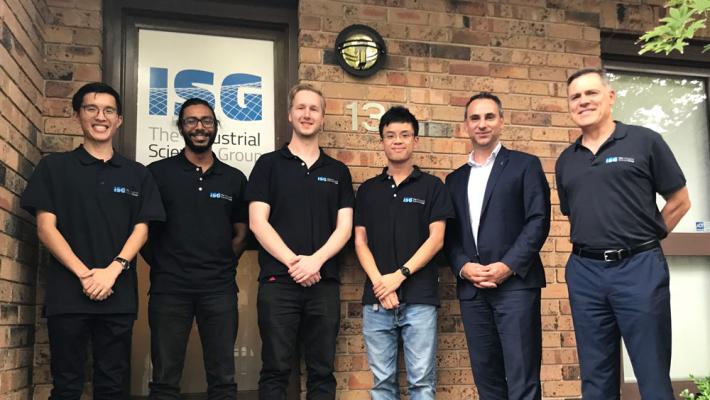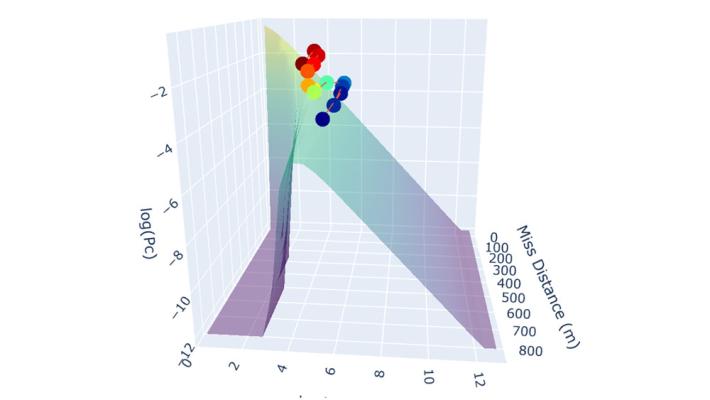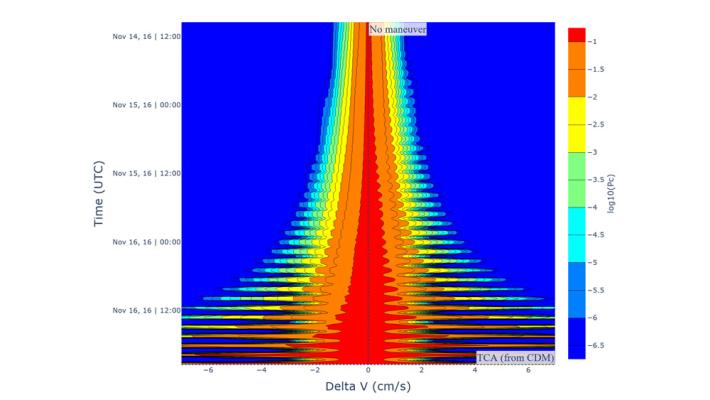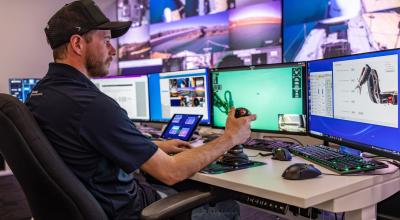Industrial Sciences Group has developed a tool that predicts satellite collisions and tells operators how to avoid them.
In the pursuit of space sustainability, a key objective is to keep satellites clear of thousands of pieces of orbiting space junk – as well as each other – so they don’t get smashed into more debris themselves. Satellites can use their thrusters to change trajectory and dodge traffic, but only if they’re told which way is safe to move in advance. Sydney-based Industrial Sciences Group (ISG) has created a system that can do just that.
Developed with NASA’s Conjunction Assessment Risk Analysis (CARA) team, which has the job of shepherding NASA’s satellites through space, the Manoeuvre Decision Support System (MDSS) uses a specialist algorithm to analyse data and predict collisions before they happen. ISG engineers carried out an extensive study of CARA’s previous collision warning database, and applied their expertise in advanced mathematics and orbital mechanics to convert the lessons learned from the data into the rigorous algorithm used by the MDSS. The result is a tool that warns satellite operators of approaching collisions and gives them avoidance options in real time, so they can make decisions confidently and efficiently.

Caption: Members of Industrial Sciences Group that developed MDSS along with Head of the Australian Space Agency Enrico Palermo | Credit: ISG
“We will need to actively manage the ‘traffic’ on the ‘roads’ in space, but there are no highway police up there. Even if something as small as a screw flies into a satellite, it can break the satellite apart and create more junk and debris. There is no global approach to assess the risk and probability of a collision occurring in space, but we are here to add some science and rigour to the decision-making process.”
~ David Shteinman, Managing Director and Senior Engineer, Industrial Sciences Group

Technology features
- Provides a validated forecast of the probability of space object collisions over time.
- Displays the ‘trade-space’ (trade-offs) of various factors on the probability and effects of collisions.
- Uses a series of Gaussian Process Regression models trained on over 700,000 conjunction data messages for 25 NASA satellites.
- Verified against 7 years of data from real space operations in orbit.
- Overall accuracy equivalent to a trained NASA CARA operator, giving zero false negatives.

Project highlights
- Agency International Space Investment Initiative grant awarded to support collaborative development work with NASA CARA.
- Demonstrated in a live operations environment in Sprint Advanced Concept Training (SACT) exercises.
- Built in partnership with NASA CARA analysts and operators.
- Used side-by-side with NASA CARA live operations for several months.
- US Combined Space Operations Center and Space Domain Awareness TAP Lab staff trained by ISG on use of the MDSS tool.

Industry showcase
Australian space innovations making an impact
